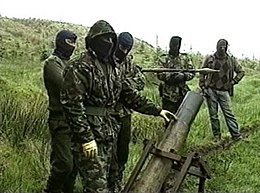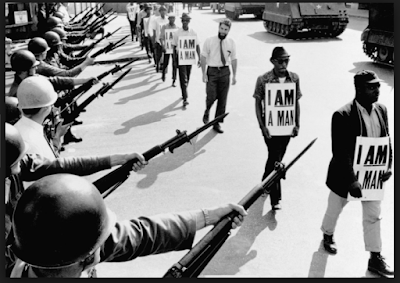TRIBUTE TO Cranberries' Dolores O'Riordan, leading singer of the Irish Rock Band
TRIBUTE TO Cranberries' Dolores O'Riordan, leading singer of the Irish Rock Band

Lyrics: https://genius.com/The-cranberries-zombie-lyrics
This song is culturally important, as it deals with Warrington bombings of 1993, carried by the political terrorist member of the IRA ( the Irish Republican Army), who sought Northern Ireland independence from England.

Lyrics: https://genius.com/The-cranberries-zombie-lyrics
This song is culturally important, as it deals with Warrington bombings of 1993, carried by the political terrorist member of the IRA ( the Irish Republican Army), who sought Northern Ireland independence from England.
As you all know, politically, Ireland is divided between the Republic of Ireland (officially named Ireland), which covers five-sixths of the island, and Northern Ireland, which is part of the United Kingdom, in the northeast of the island.
Warrington bomb attacks
| Warrington bombings | |
|---|---|
| Part of the Troubles | |
| Location | Warrington, Cheshire, England, United Kingdom |
| Date | 26 February 1993 04:10 (GMT) 20 March 1993 12:25 (GMT) |
| Target | 1st attack: a gas storage facility 2nd attack: Bridge Street, Warrington |
Attack type
| Bombing |
| Deaths | 2 |
Non-fatal injuries
| 56[1] |
| Perpetrator | Provisional IRA |
| Motive | see Provisional IRA campaign |
The Warrington bombings were two separate bomb attacks that took place during early 1993 in Warrington, England. The first attack happened on 26 February, when a bomb exploded at a gas storage facility. It caused extensive damage but no injuries. While fleeing the scene, the bombers shot and injured a police officer and two of them were then caught after a high-speed car chase. The second attack happened on 20 March, when two small bombs exploded in litter bins outside shops and businesses on Bridge Street. Two children were killed and dozens of people were injured.
The attacks were carried out by the Provisional Irish Republican Army (IRA) and it has been claimed that members of Red Actionwere also involved.[2] Since the early 1970s the IRA had been carrying out attacks in both Northern Ireland and England with the stated goal of putting pressure on the British Government to withdraw from Northern Ireland.[3] The 20 March bombing received extensive coverage in the media and caused widespread anger, leading to mass protests against the IRA in Dublin.
Provisional Irish Republican Army
| Provisional Irish Republican Army (Óglaigh na hÉireann) | |
|---|---|
| Participant in The Troubles | |

IRA members showing an improvised mortar and an RPG (1992)
| |
| Active | December 1969 – July 1997 on ceasefire in June 1972 between February 1975 - January 1976 and 31 August 1994 - 7 February 1996 |
| Ideology | Irish republicanism Left-wing nationalism[1] |
| Allegiance | |
| Leaders | IRA Army Council |
| Size | 30,000 during the Troubles[2][3] in addition to an unknown number of 'auxiliary' or 'second-line' members. A large bulk would have joined in the early 70's and left after a few months, there were probably 5,000 dedicated volunteers who would stay for several years (some for over a decade) from 1969–1997[4] |
| Originated as | Irish Republican Army (IRA) |
| Opponents | |
The Provisional Irish Republican Army (Provisional IRA) is a former[9][10][11][12] Irish republican paramilitaryorganisation that sought to remove Northern Ireland from the United Kingdom and to bring about an independent socialist[1] republic encompassing all of Ireland.[13][14] It was the biggest and most active republican paramilitary group during the Troubles. It saw itself as the successor to the original IRA and called itself simply the Irish Republican Army(IRA), or Óglaigh na hÉireann in Irish,[15] and was widely referred to as such by others.
The Provisional IRA emerged in December 1969, following a split in the republican movement. The Troubles had begun a year before, when a largely Catholic, nonviolent civil rights campaign was met with violence from both Ulster loyalists and the Royal Ulster Constabulary (RUC), culminating in the August 1969 riots and deployment of British troops.[16] The IRA initially focused on defence of Catholic areas, but it began an offensive campaign in 1971 (see timeline). The IRA's primary goal was to force the United Kingdom to negotiate a withdrawal from Northern Ireland.[17] It used guerrilla tactics against the British Army and RUC in both rural and urban areas. It also carried out a bombing campaign in Northern Ireland and England against what it saw as political and economic targets.
The IRA called a final ceasefire in July 1997, after its political wing Sinn Féin was re-admitted into the Northern Ireland peace talks. It supported the 1998 Good Friday Agreement and in 2005 it disarmed under international supervision. An internal British Army document (released in 2007 under the Freedom of Information Act) examining its 37 years of deployment in Northern Ireland, describes the IRA as "a professional, dedicated, highly skilled and resilient force", while loyalist paramilitaries and other republican groups are described as "little more than a collection of gangsters".[18] Several splinter groups have emerged, including the Continuity IRA which emerged from a split in 1986 but did not become active until the Provisional IRA ceasefire of 1994, and the Real IRA after the final 1997 ceasefire, both of which are still active in the low-level dissident Irish republican campaign.


Comments
Post a Comment